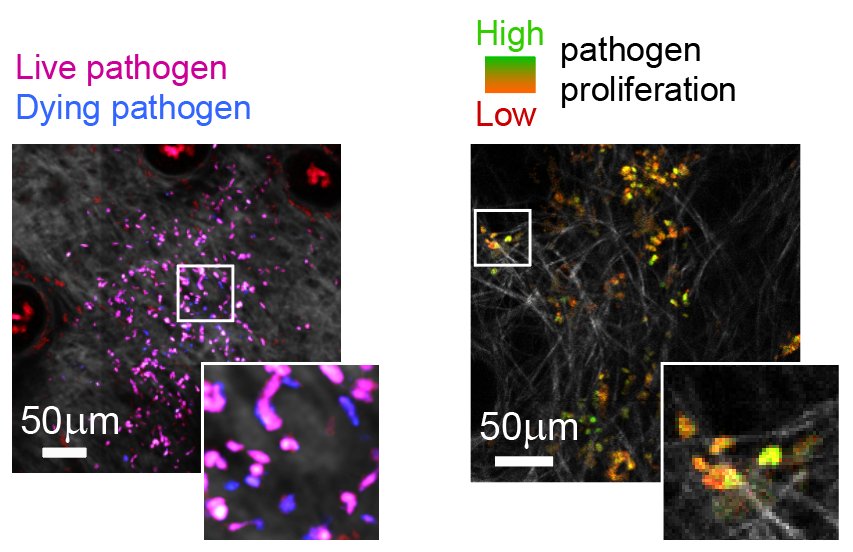How does the immune response affect pathogen viability?
Using newly developed genetically encoded biosensors, we can determine parameters such as pathogen growth rate, but also pathogen stress and killing in living tissue. This allows us to determine how an immune response achieves pathogen control in tissue. Since biological processes in the pathogen also influence its sensitivity to therapeutic interventions, we can also draw conclusions about how best to support the immune response in infections.

In vivo reporter systems permit the analysis of pathogen death and proliferation in real time using intravital 2-photon microscopy of the infected skin.
Left: A genetically encoded pathogen death reporter system consisting of a pH stable (blue) and pH sensitive (red) fluorescence protein reveals dying L. major parasites which are unable to uphold their cytosolic neutral pH in the phagosome of infected phagocytes. Dermal collagen is shown in grey.
Right: A photoconvertible protein expressed by L. major results in a red to green color change in proliferating pathogens, whereas non-proliferating parasites remain red. (Formaglio, Alabdullah et al., Immunity. 2021 Oct 15:S1074-7613(21)00406-4.)






